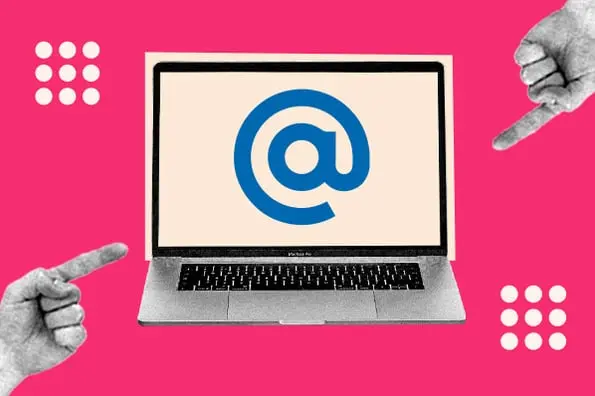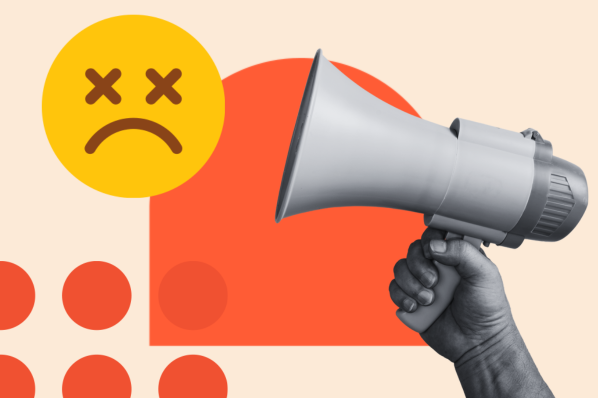.jpg?width=300&height=299&name=istock_000017400917xsmall(1).jpg) If you're a CMO, you may have heard the term "native advertising" bandied about recently. While there are
many varied definitions
of the term, it can best be described as a form of advertising that consists of relevant, valuable content that's part of a media outlet's editorial offering. In plain English, that means paid editorial.
If you're a CMO, you may have heard the term "native advertising" bandied about recently. While there are
many varied definitions
of the term, it can best be described as a form of advertising that consists of relevant, valuable content that's part of a media outlet's editorial offering. In plain English, that means paid editorial.
Wait ... What Is Native Advertising?
Native advertising can, in its most popular format, take the form of a sponsored blog post or article. Or it could be a sponsored story on Facebook, a promoted video on YouTube, or a promoted account on Twitter, among other things. Basically, it consists of natural content that appears in a medium's organic content stream -- with the caveat that its placement was purchased rather than appearing organically.
Now, many of you may be shaking your head at this point exclaiming, "What's up with all these people who feel the need to slap a new label on something that's been around since consumer packaged goods companies created the soap opera?" And to some degree you'd be right in your assumption that native advertising is just an advertorial in shiny new clothing. But you'd also be wrong.
Native advertising, done right, is not an advertorial. Native advertising, done right, is not product placement. Native advertising, done right, offers valuable, educational, useful information to your customers and prospects.
The Role of Content in Inbound Marketing
So why would an inbound marketing software company like HubSpot be telling you about the benefits of native advertising, which, by most accounts, is just advertising? Because without inbound marketing strategies in place, there can be no effective use of native advertising. That's a fairly strong statement, but follow along as we make our case.
A recent Marketing Budgets 2013 study by Econsultancy and Responsys found that 70% of brand marketers will allocate budget to content creation , an integral component of inbound marketing, in 2013. The category ranked the highest of all digital marketing channels -- which just makes it all the more important that you ensure your content strategy is in place before your competitors'.
The role of content creation is integral to inbound marketing success. Developing informative and educational content enables you to advance the cause of your product or service in a way that doesn't sound like a car dealer screaming at you while holding a bunch of balloons in one hand ... and a waving flag in the other.
And within inbound marketing, you're using that content to cultivate and generate leads through marketing offers (e.g. ebooks, webinars, whitepapers, etc.). Content in marketing also includes the use of email marketing to offer additional information to leads with the aim of moving them down the purchase funnel (which isn't really a funnel any longer), as well as the creation of landing pages on which products can be promoted, and the use of social media, which can further disseminate content.
Additionally, the use of content extends to many other marketing methods like search engine optimization , lead management , and marketing automation . For the most part, it all starts with content. Content that is informative, educational, and relevant, but also -- and this is most important -- content that is ultimately designed to sell something.
Inbound marketing became possible with the advent of the internet, which offers potential buyers the ability to access any kind of information they want, about any topic of interest, at any time of their choosing. Google made the process even easier. SEO and SEM tactics easier still. But it wasn't until the marriage of buyers' increasingly anti-advertising mindset and growth of ad blocking technologies (e.g. DVRs, ad blockers, etc.) that inbound marketing really took a foothold.
Inbound marketing sidesteps buyers' advertising blinders, because it isn't car dealer-style advertising that not one wants to see. Instead, inbound marketing offers information that was sought after and found to be valuable to the consumer. If you're a marketer touting the latest and greatest in, say, inbound marketing, you had best dominate the first few organic search results for it.
Now, those top organic SERP positions can be links to content on your own site (gleaned through effective SEO and social media efforts), they can be links to content on other sites to which you have contributed , or they can be news stories on media sites. That covers owned and earned media ... but what about paid media?
How Inbound Marketing Can Fuel Native Advertising
Certain types of advertising can help boost and supplement inbound content efforts. We do it right here at HubSpot when we use PPC, Promoted Posts, Promoted Tweets, and other forms of paid marketing to attract more people to our content. And that's the key: to promote your content , not your product . You don't want to point people to a man standing in a parking lot with a bunch of balloons in one hand and a flag in the other; you want to point people to a thoughtful piece of content that discusses why buying a car at your dealership will save you money in the long run and provide you with years of hassle-free service.
Yes, ultimately you want to sell a product or service -- and you will (likely with the help of with segmented lead nurturing , dynamic content , and proper marketing automation ). But you'll be far more effective in doing so when you offer valuable, usable, actionable information on why a person should consider your products/services rather than just screaming at them that they should just trust you and buy because you told them to.
Put simply, native advertising and sponsored stories cast a wider net to amplify your inbound marketing efforts. Sure, straight inbound marketing will go a long way to getting your message in front of your potential customer base in a very cost-efficient manner, and everyone should start with purely organic inbound marketing to get the best possible ROI. But if you have a few extra bucks to help that content proliferate further and are willing to spend more for higher growth even at a lower ROI, then native advertising is worth considering.
It's also worth noting that there may still be many people who find sponsored stories annoying and disruptive. Keep in mind that the people who see these types of ads did not give you permission to talk to them and were not expecting them in their organic content streams. This makes it even more critical that you fuel your native advertising with inbound marketing. Keeping track of sentiment can also help you determine whether your efforts are worth it.
Remember though, you must have worthwhile content in the first place. And a robust inbound marketing solution will provide you the process, procedures, and proper workflow you need to create great content worth sharing.
Is your inbound marketing content strategy up to snuff?





![How to Delete Your Instagram [Easy Guide]](https://blog.hubspot.com/hubfs/delete-instagram.png)
![Millennials vs. Gen Z: Why Marketers Need to Know the Difference [New Data]](https://blog.hubspot.com/hubfs/millenials%20vs%20gen%20z%20what%20marketers%20need%20to%20know%20when%20trying%20to%20reach%20each%20generation.jpg)

![How to Edit a PDF [Easy Guide]](https://blog.hubspot.com/hubfs/280_How-to-Edit-PDF.png)

![Marketing Without a Budget? Use These 10 Tactics [Expert Tips]](https://blog.hubspot.com/hubfs/marketing%20without%20budget.jpg)
